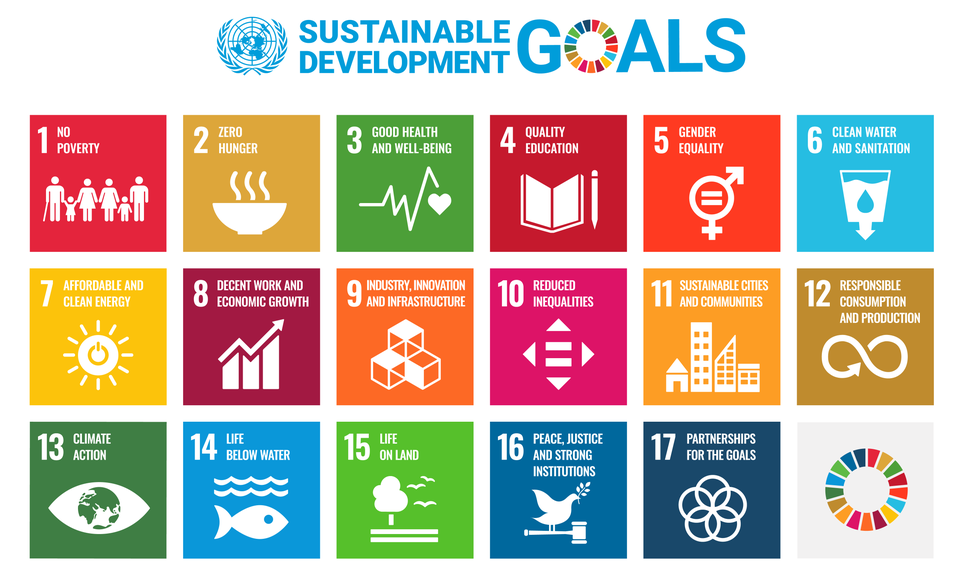In 2015, all 193 member countries of the United Nations came together to adopt an ambitious global plan: the Sustainable Development Goals, or SDGs. These 17 interconnected goals aim to end poverty, protect the planet, and ensure peace and prosperity for all by the year 2030. The SDGs are a universal call to action — for governments, businesses, communities, and individuals — to create a world that is fairer, safer, and more sustainable.
🌍 What Are the SDG Goals?
The Sustainable Development Goals (SDGs) are part of the UN Agenda 2030. Each goal addresses key global challenges — such as poverty, hunger, education, health, gender equality, clean energy, and climate change — in a holistic and interconnected way.
Together, they provide a blueprint for achieving a better and more sustainable future for everyone, everywhere.
✅ List of the 17 SDG Goals
-
No Poverty – End poverty in all its forms everywhere
-
Zero Hunger – End hunger, achieve food security, and promote sustainable agriculture
-
Good Health and Well-being – Ensure healthy lives and promote well-being for all
-
Quality Education – Ensure inclusive and equitable quality education for all
-
Gender Equality – Achieve gender equality and empower all women and girls
-
Clean Water and Sanitation – Ensure availability and sustainable management of water
-
Affordable and Clean Energy – Ensure access to sustainable, modern energy
-
Decent Work and Economic Growth – Promote sustainable economic growth and decent work
-
Industry, Innovation and Infrastructure – Build resilient infrastructure and foster innovation
-
Reduced Inequalities – Reduce inequality within and among countries
-
Sustainable Cities and Communities – Make cities inclusive, safe, and sustainable
-
Responsible Consumption and Production – Ensure sustainable consumption and production patterns
-
Climate Action – Take urgent action to combat climate change
-
Life Below Water – Conserve oceans, seas, and marine resources
-
Life on Land – Protect forests, combat desertification, and halt biodiversity loss
-
Peace, Justice and Strong Institutions – Promote peaceful and inclusive societies
-
Partnerships for the Goals – Strengthen global partnerships to achieve the goals
💡 Why Are the SDGs Important?
The SDGs are not just ideas on paper — they are life-saving commitments. They matter because:
-
More than 700 million people live in extreme poverty
-
Over 800 million people go hungry daily
-
Millions still lack access to clean water, education, and healthcare
-
Climate change is threatening the planet and future generations
-
Inequality and injustice still exist in every society
The SDGs aim to leave no one behind, especially the most vulnerable.
🌱 Sustainability at the Core
The word “sustainable” appears in almost every goal — because development that destroys the planet is not development at all.
-
SDG 6 (Clean Water) and SDG 13 (Climate Action) focus on natural resources and climate protection.
-
SDG 12 (Responsible Consumption) encourages eco-friendly lifestyles.
-
SDG 7 and 11 promote clean energy and green cities.
Together, the SDGs push us to balance people, planet, and prosperity.
🏫 Role of Education and Youth
Youth are the drivers of change. Schools and universities across the world are:
-
Teaching SDG topics through projects, debates, and activities
-
Involving students in eco-clubs, clean-up drives, and tree-planting
-
Encouraging innovation through SDG challenges and science fairs
-
Connecting with global youth forums and leadership programs
Students can turn knowledge into action and inspire their communities.
👥 Who Can Help Achieve the SDGs?
Everyone. The goals are not just for governments. Each one of us can help:
-
Individuals – Make greener choices, volunteer, raise awareness
-
Businesses – Adopt ethical, sustainable practices
-
Governments – Fund health, education, clean energy, and justice
-
NGOs and Activists – Spread awareness and implement grassroots programs
-
Teachers and Schools – Educate the next generation of changemakers
Global progress needs local action.
🌐 India and the SDG Goals
India plays a major role in achieving the SDGs due to its size and diversity. The government and civil society are working on:
-
Swachh Bharat Mission – for sanitation (SDG 6)
-
Beti Bachao, Beti Padhao – for gender equality (SDG 5)
-
Ayushman Bharat – for health coverage (SDG 3)
-
National Solar Mission – for clean energy (SDG 7)
States, cities, and rural areas are creating their own SDG action plans to suit local needs.
🕊️ Are We on Track to Achieve the SDGs?
While progress has been made in many areas, the world is not yet on track to meet all the goals by 2030. Challenges such as the COVID-19 pandemic, climate disasters, wars, and inequality have slowed down efforts.
That’s why the next few years are critical. The world needs:
-
Faster action
-
Stronger policies
-
More global cooperation
-
Greater public participation
🧭 Conclusion: A Roadmap for the Future
The Sustainable Development Goals are not just global targets — they are promises of a better world. A world where every child goes to school, every person lives in dignity, and the planet is protected for future generations.
🌍 Let us turn awareness into action, ideas into innovation, and dreams into development. Because achieving the SDGs means building a future that works — for everyone, everywhere.

